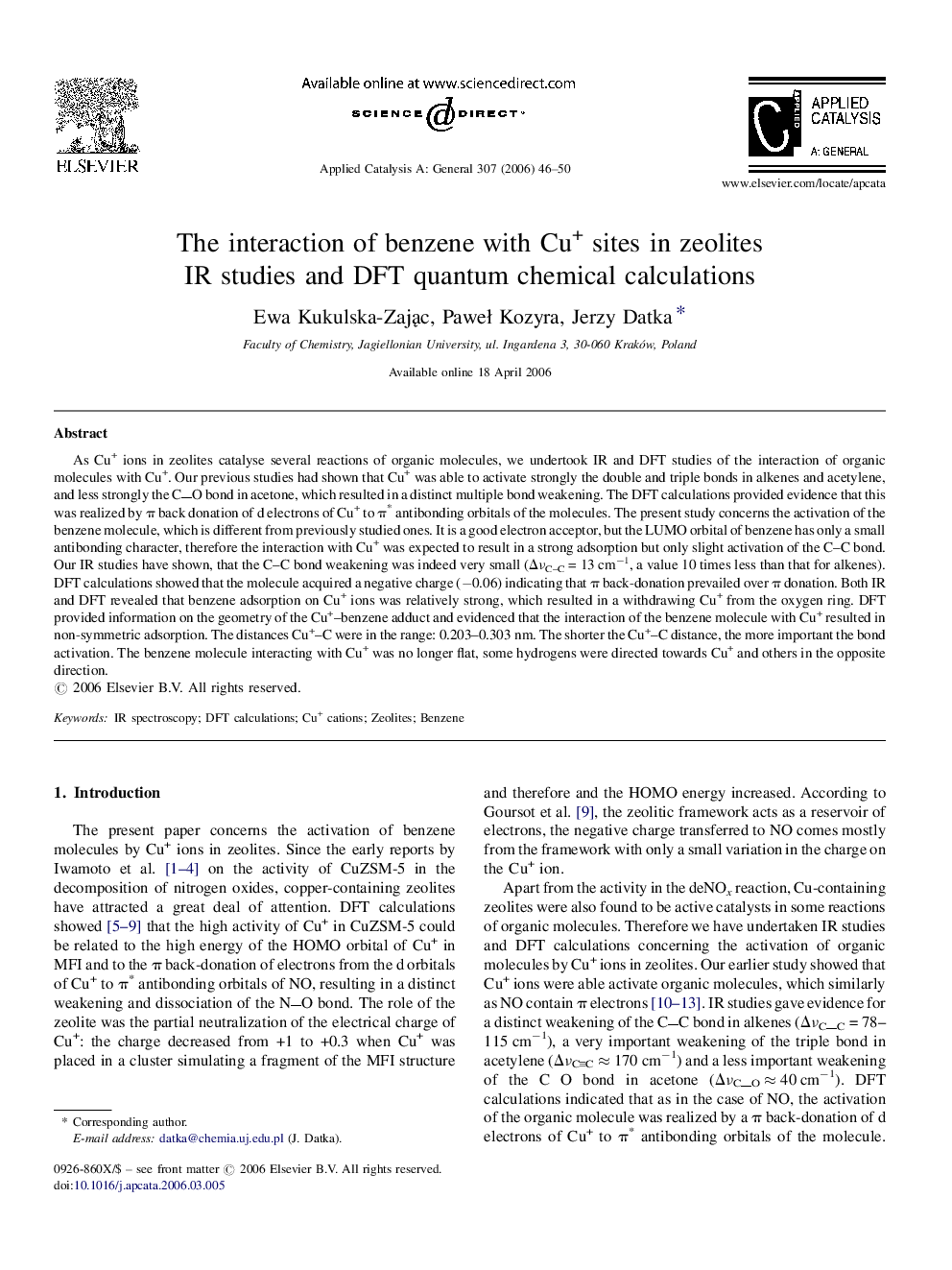| Article ID | Journal | Published Year | Pages | File Type |
|---|---|---|---|---|
| 44674 | Applied Catalysis A: General | 2006 | 5 Pages |
As Cu+ ions in zeolites catalyse several reactions of organic molecules, we undertook IR and DFT studies of the interaction of organic molecules with Cu+. Our previous studies had shown that Cu+ was able to activate strongly the double and triple bonds in alkenes and acetylene, and less strongly the CO bond in acetone, which resulted in a distinct multiple bond weakening. The DFT calculations provided evidence that this was realized by π back donation of d electrons of Cu+ to π* antibonding orbitals of the molecules. The present study concerns the activation of the benzene molecule, which is different from previously studied ones. It is a good electron acceptor, but the LUMO orbital of benzene has only a small antibonding character, therefore the interaction with Cu+ was expected to result in a strong adsorption but only slight activation of the C–C bond. Our IR studies have shown, that the C–C bond weakening was indeed very small (ΔνC–C = 13 cm−1, a value 10 times less than that for alkenes). DFT calculations showed that the molecule acquired a negative charge (−0.06) indicating that π back-donation prevailed over π donation. Both IR and DFT revealed that benzene adsorption on Cu+ ions was relatively strong, which resulted in a withdrawing Cu+ from the oxygen ring. DFT provided information on the geometry of the Cu+–benzene adduct and evidenced that the interaction of the benzene molecule with Cu+ resulted in non-symmetric adsorption. The distances Cu+–C were in the range: 0.203–0.303 nm. The shorter the Cu+–C distance, the more important the bond activation. The benzene molecule interacting with Cu+ was no longer flat, some hydrogens were directed towards Cu+ and others in the opposite direction.
